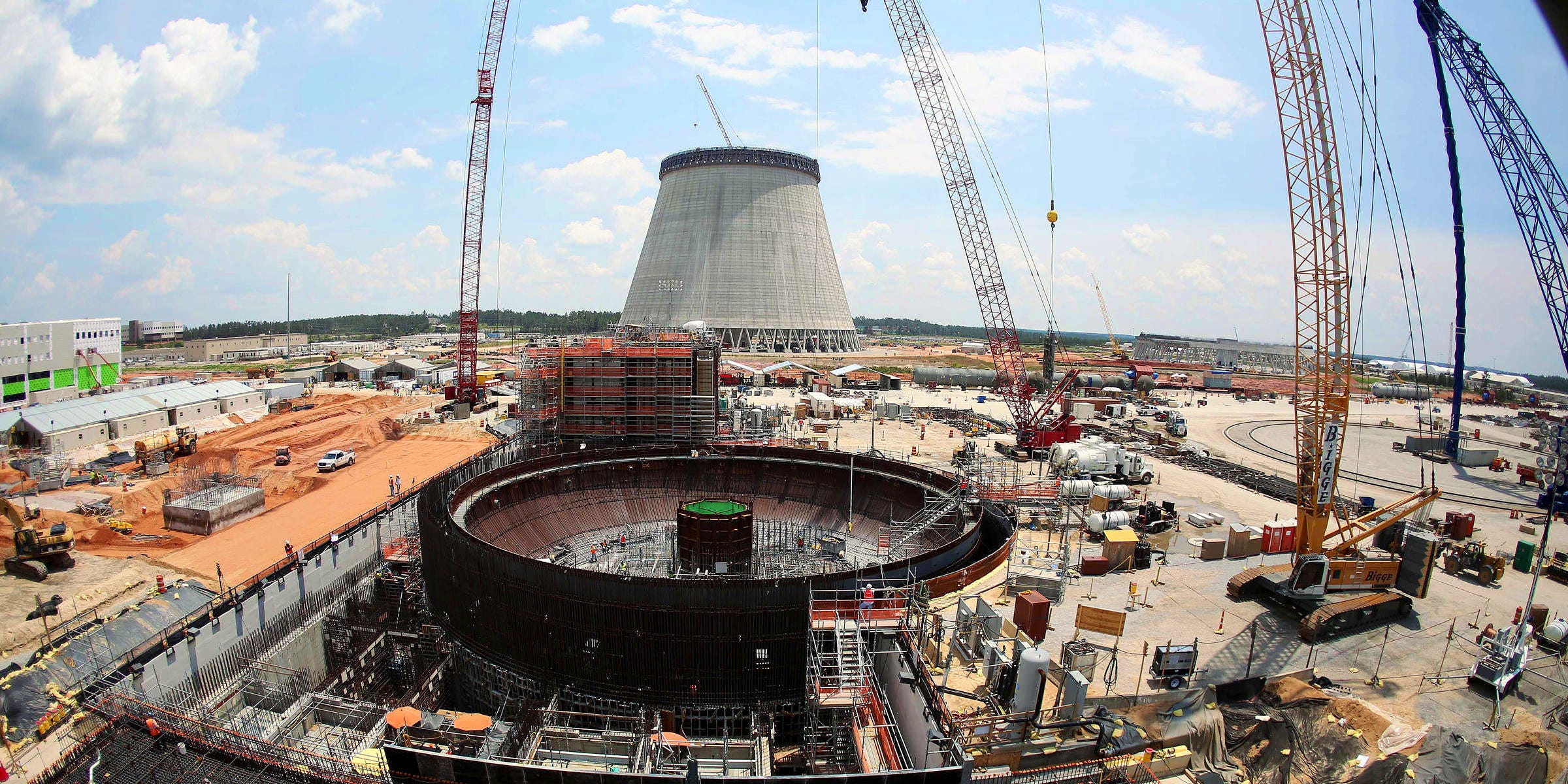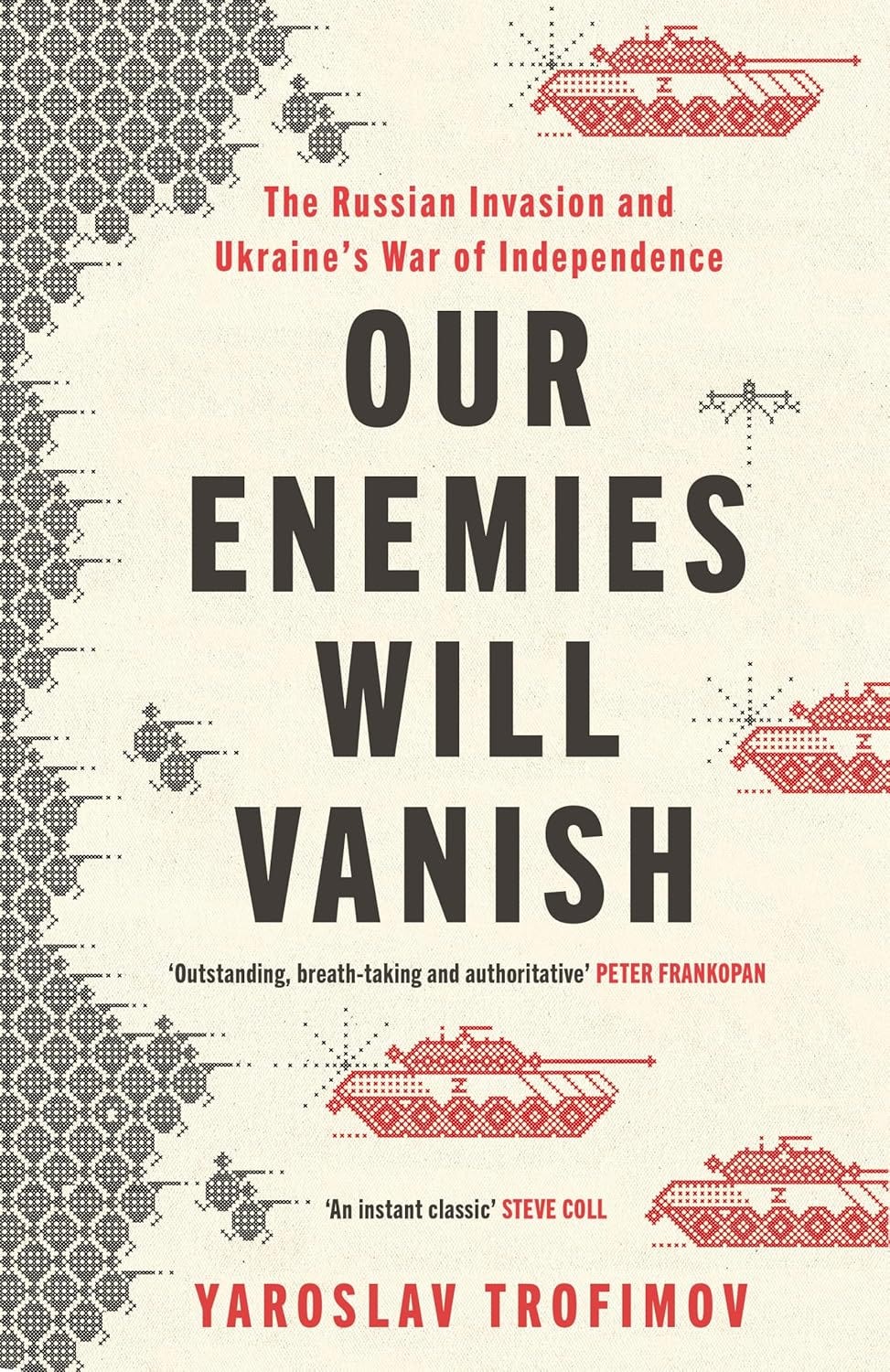566: The Product Era of AI, What Will OpenAI + Jony Ive Build, Jensen, Oracle to Buy $40bn of Nvidia GPUs, UAE, White House Fast-Tracks Nuclear, Meta AI Lab in Trouble?, and Claude 4
"Every action begins with an idea"
It is not in the stars to hold our destiny but in ourselves.
–William Shakespeare
🇨🇦✈️ 🇩🇪📸🗼🏰🍺🧀 Last week, I went to Germany for the first time, and I loved it.
Having never been, I had some idea of what to expect, but reality was so much better. The city, the people, the culture.
I tried to cram as much as possible into my short time there and ended up walking around as much as I could, visiting cathedrals, monuments, museums, historically significant places. I skipped Uber rides and instead walked to biergartens and friends’ apartments so I could absorb more of the city’s texture.
I climbed the Berliner Dom and got a 360° view of Berlin. I found myself wishing I could hear some J.S. Bach played on the giant pipe organ (pictured above). I had an emotional moment at the Holocaust memorial. I marveled at the downtown architecture, and I spent hours at the Alte Nationalgalerie, my favorite of the museums I visited, just staring at paintings and sculptures.
But the best part? The people.
I had never met or even spoken to most of the people I hung out with there, but their hospitality, kindness, intelligence, and passion won me over. I feel like I’ve made new friends that I hope to see again (and next time, I’ll bring my family along).
I also finally met my friend Mark Nelson in the flesh, after years of talking on Zoom, DMs, and recording podcasts together. And I got to meet fellow Canadian 🍁 Dr. Chris Keefer, host of the Decouple podcast (a fave of mine for years) and the founder of Canadians for Nuclear Energy, a small organization that had a BIG impact on Canada’s energy policy.
🇩🇪 🔌⚛️⚡✅ My reason for going to Berlin was the Anschalt Konferenz.
OSV awarded a fellowship to Mark Nelson to help organize it, with the goal of informing and, hopefully, convincing Germans to restart their nuclear power plants (“anschalt” translates roughly to “turn on” or “restart” in this context). It’s such a no-brainer — the plants are already built, they’re dormant but can be reawakened.
It would certainly allow Germany to better reach its stated goals (environmental and security) much better than the shutdown, which led to more coal and gas being burned. And as Germany entered the global gas market at scale, it caused higher energy prices in poor countries and more money flowing to Russia, along with greater dependence on foreign sources of energy (including large imports of nuclear electricity from France, ironically).
The conference was great. It exceeded my expectations, and several Germans told me that it succeeded beyond their most optimistic dreams and was by far the largest and best-organized pro-nuclear conference in Germany and Europe. Guest speakers and attendees came from all over: the U.S., Spain, Italy, Denmark, Finland, Poland, etc.
Tickets were sold out, key German politicians and media showed up, and thousands more people watched the video online.
It was great to see people exchange ideas and advice, form new connections, and support each other’s projects. It feels like an important seed was planted — hopefully, when the time is right, the ideas from this conference will be turned into reality.
Every action begins with an idea, so this is important work. 💡→🏗️
There’s a raw video of the livestream on YouTube, but when the cleaned-up video with the translator audio removed from the English speakers is out, I’ll link it.
💚 🥃 🙏☺️ If you’re a free sub, I hope you’ll decide to become a paid supporter.
You’ll unlock access to paid editions, the private Discord, and get invited to the next supporter-only Zoom Q&As with me.
If you only get one good idea 💡 per year, it’ll more than pay for itself. If it makes you curious about new things, that’s priceless.
The next best thing? Share something you enjoyed here with someone who might like it too. Drop a screenshot and a link in your group chat! 💬
🏦 💰 Business & Investing 💳 💴
🤖 OpenAI ❤️ Jony Ive: What Will They Build? My Take on AI's Physical Era 🤔⌚️
Jony Ive had already been working with OpenAI for 2 years, through his design firm LoveFrom. But apparently, that wasn’t quite enough, so Ive co-founded ‘io’ in 2024 to focus on hardware, and OpenAI bought 23% of it.
Still, that relationship wasn’t close enough, so the bromance was taken to the next level when OpenAI bought the rest of ‘io’ for $6.5bn in stock. Sam and Jony released a press release and a 9-minute video to show the world how much they like each other and are product soulmates. 💞
‘io’ is small, with only 55 people. But it’s not the quantity, it’s the *quality*.
Ive recruited design, software, and hardware experts from Apple, cherry-picking an impressive group of top talent, instantly making ‘io’ a real contender, even against much larger companies.
There’s no detail yet on what they’ll be building together, other than that it’s not just one thing, but “a family of products”. But based on Ive and Altman’s public statements and past work, I can speculate a bit.
First, based on the recent interview he gave Patrick Collison, Ive is clearly ambivalent about the impact of the smartphone. He sounds like he wants to free people from their phones.
Second, Ive is a well-known horophile, a lover of watches. It’s not surprising because they’re an interesting playground for designers: a mix of hardware and soft materials. More like jewelry than most electronics, they can be personalized by mixing and matching case colors, materials, and bands.
Third, for ChatGPT to be even more useful, it needs to be always with us, ready to listen and absorb the world through sensors for extra context. For AI to be personal, it needs to be in an ongoing conversation with us.
⌚️ That’s why I think their first product will be a kind of watch or bracelet.
It would always be there when you need it, and out of the way when you don’t.
It could answer questions rapidly, and the answer to more complex queries could be sent to your phone or computer. It could piggyback on your phone for connectivity, but could also have its own cell modem to also work independently (though this would impact battery life).
Unlike the Apple Watch, it wouldn’t have to maintain a single design because most of the utility would come from voice interaction, not the screen. So smaller screenless bracelets, or versions with tiny displays, could coexist with larger Garmin-like watches offering more features and longer battery life. This modularity would broaden appeal and span a wider price range.
As long as the “AI Core” is part of the design, the rest can be modular. The concept images I generated show smaller designs, but there’s no reason big honkin’ versions couldn’t exist too.
👓 Why not glasses?
I think that’ll come too, but the tech to make glasses *really* compelling with AR is a bit further off. If OpenAI made something more limited, like Meta’s Ray-Ban glasses, they probably wouldn’t get the “all day” usage — most people won't wear glasses all the time unless they need them. 🤓
In other words, face real estate is more expensive and harder to colonize than wrist real estate.
But I wouldn’t be surprised if the OpenAI family of products eventually included:
A Watch/Bracelet (probably a variety of them, maybe even pendants to be worn around the neck)
Glasses (first with cameras and audio, but eventually fully AR)
Stationary home devices, similar to Amazon Echos, but with actually good AI tied to your ChatGPT account, so it’s personalized.
What do you think?
🐜🇹🇼🔌⚛️ Jensen Huang Calls on Taiwan to Support Nuclear Power
Taiwan has, sadly, made the same mistake that many others have made when it comes to nuclear energy, the closest thing that humanity has found to a cheat code (magic rocks that heat water into steam to power civilization! 🔌⚡️🪨🌡️).
Here’s a short history for context:
It all began in 1978 with the Chinshan-1 boiling-water reactor. By the mid-1980s, Taiwan had six reactors at three sites (Chinshan, Kuosheng, and Maanshan). At its 1985 peak, nuclear power delivered roughly 52% of Taiwan’s electricity with just over 5GW of capacity.
In 2016, the Democratic Progressive Party included “a nuclear-free homeland by 2025” into the Electricity Act, mandating the retirement of each unit at the end of their 40-year licence. Chinshan-1 and 2 closed in 2018 and 2019 (604 MW each), Kuosheng-1 in mid-2021 and Kuosheng-2 in March 2023 (985 MW each), followed by Maanshan-1 in July 2024 (936 MW).
Taiwan’s last active reactor, Maanshan-2 (938 MW), was disconnected from the grid earlier this month, on May 17th, removing the final 4-5 % of low-carbon baseload from the grid at a time when demand for reliable energy is more crucial than ever for the island.
But hey, mistakes can be corrected and laws can be changed. There’s still some hope:
Taiwan will hold a national referendum on restarting a nuclear reactor that it shut down [...] The Aug. 23 poll will decide whether the Maanshan nuclear power plant, the territory’s last one to be shuttered, should resume operations if there are no safety concerns [...]
A similar referendum in 2021 narrowly cemented the closure of a separate nuclear plant, but concerns on the island are rising about power demand from some of the world’s biggest chipmakers and about energy security in the event of a military blockade by China.
Never give up, never surrender. Hopefully, this passes, and the next step is to look at the other closed plants.
One of the most influential voices in the world these days, Nvidia CEO Jensen Huang, who was born in Taipei, recently spoke in favor of nuclear energy. Here’s what he said at the Insight AI Trend Summit (machine translation from Chinese):
“I care about energy. Taiwan should absolutely invest in nuclear energy. Energy shouldn’t be stigmatised. Wind, solar and nuclear all deserve support.”
“We need every source—wind, solar, nuclear. Without energy, growth simply can’t continue.”
I don’t expect any overnight miracles, but hopefully some seeds are being planted and this message doesn’t fall on deaf ears.
In the meantime, Taiwan’s grid is running on roughly 40% coal and 40% natural gas…
🌟 Stargate: Oracle to Buy $40bn of Nvidia Chips for OpenAI’s New U.S. Datacenter + 🇦🇪 UAE 5GW AI Project 💰💰💰💰
Speaking of Jensen, I’m sure he’s going to send very nice holiday cards to Sam Altman and Larry Ellison this year:
Oracle will spend about $40bn on Nvidia’s high-performance computer chips to power OpenAI’s new giant US data centre, as technology groups race to build the vast infrastructure needed to underpin artificial intelligence models.
The site in Abilene, Texas, has been billed as the first US Stargate project, the $500bn data centre scheme spearheaded by OpenAI and SoftBank, and will provide 1.2 gigawatts of power when it is completed next year, making it one of the largest in the world.
Oracle would purchase about 400,000 of Nvidia’s GB200 chips [...]
The site’s owners, Crusoe and US investment firm Blue Owl Capital, have raised $15bn in debt and equity to finance the Abilene project, which will encompass eight buildings. [...]
The data centre is expected to be fully operational by mid-2026. Oracle has agreed to lease the site for 15 years.
But that’s not all! Stargate is also going to the Middle East:
OpenAI said it was partnering with United Arab Emirates firm G42 and others to build a huge artificial-intelligence data center in Abu Dhabi [...]
OpenAI and G42 said Thursday the data center would have a capacity of 1 gigawatt, putting it among the most powerful in the world. [...]
The 10 sq mile UAE-US AI campus, located in Abu Dhabi and built by Emirati AI company G42, is planned to have 5GW of data centre power — equivalent to more than 2 [million] of AI chipmaker Nvidia’s latest generation of GB200 chips.
That’s a lot of GPUs!
🧪🔬 Science & Technology 🧬 🔭
🏗️⚛️👷 Fast-Tracking a U.S. Nuclear Renaissance: What the White House Just Announced
A lot of what the U.S. federal government has been doing lately has been dumb, chaotic, misguided, and counterproductive — even by its own stated goals — but this one could be an exception.
I suspect that Energy Secretary Chris Wright is behind a lot of this (Mark Nelson and I discussed him and his likely policies on this podcast).
Here’s an overview of what was announced, from the fuzzier goals to the more concrete executive orders:
Capacity goal: quadruple output to ~400 GW by 2050, which would be about four times today’s 100 GW! 😯
5 GW of power uprates to existing nuclear reactors, and start 10 large reactors by 2030. 🛠️
Overhaul the Nuclear Regulatory Commission: impose an 18-month deadline for new-reactor approvals and 12 months for renewals, while reviewing radiation-safety rules (this is the “linear-no-threshold” model). ⏱️
Deploy small & micro reactors on military and DOE sites, with the first unit targeted for 2028.
A new federal fuel bank will release 20 metric tons of HALEU to help jump-start any project from the private sector that receives authorization.
Turn national labs into fast-track testbeds: aim for three advanced test reactors running by July 4th, 2026 under expedited environmental reviews 👩🔬
Rebuild the domestic fuel cycle and finance new builds: invoke the Defense Production Act and DOE loans to restart enrichment, create a uranium supply consortium to ensure availability of nuclear fuel supply chain capacity, “including milling, conversion, enrichment, deconversion, fabrication, recycling, or reprocessing.”
Of course, there are risks that the execution is bungled, that indiscriminate DOGE cuts to the NRC slow things down in the short term. But at least this points in the right direction, and the appetite for nuclear is back.
One of the most important things here is that it looks more like a long-term national program than a scattered set of one-offs. That’s VERY IMPORTANT because it allows the U.S. nuclear workforce and supply chain the predictability it needs to rebuild itself.
You get good at doing complex things by doing them. You can try to learn from the experience of others, but at the end of the day, you have to get started and go up your own learning curve.
If you know you’ll be building dozens of plants over decades, even if the first one takes longer and is more expensive, what’s learned rolls into the next one, and so on. Even if there are issues early on, the average construction time and cost over the whole program can still be very decent.
Nuclear *can* be built rapidly and with controlled costs. China is proof of that.
The past is also evidence of that: countries like the US, France, Japan, etc, built dozens and dozens of plants over a short time using slide rules and with far lower GDPs than today.
The idea that we can’t build anymore is self-fulfilling.
Just look at the hundreds of billions in capex going into datacenters and the incredibly complex supply chains for all the advanced networking and computing hardware running the internet. All of it scaled rapidly, from dial-up to gigawatt-scale AI infrastructure, in a couple of decades.
🗣️🗣️🤖🔮 The State of AI: Scaling Reinforcement Learning, Automating White Collar Work, Agents, Claude 4, Slop, Mechanical Interpretability, Inference Bottleneck, etc
Things change so fast, it’s great to hear a few of the people at the cutting edge of AI.
Both Sholto Douglas and Trenton Bricken work at Anthropic, and this conversation gives an idea of what they’re thinking about, the current challenges and opportunities:
Here’s a highlight on why white collar work is likely to be automated rapidly:
Trenton Bricken: Yeah. Just to make it explicit, we've been touching on it here. Even if AI progress totally stalls, you think that the models are really spiky, and they don't have general intelligence. It's so economically valuable, and sufficiently easy to collect data on all of these different jobs, these white collar job tasks, such that to Sholto's point we should expect to see them automated within the next five years.
Even if you need to hand spoon every single task to the model.
Sholto Douglas: It's economically worthwhile to do so. Even if algorithmic progress stalls out, and we just never figure out how to keep progress going—which I don't think is the case, that hasn't stalled out yet, it seems to be going great—the current suite of algorithms are sufficient to automate white collar work provided you have enough of the right kinds of data. Compared to the TAM of salaries for all of those kinds of work, it is so trivially worthwhile.
↩️🧠🦙 Is Meta’s AI Lab in Trouble? 🤔
There appears to be some kind of brain drain at Meta’s AI lab, and Llama 4’s lukewarm reception probably isn’t helping (or maybe Llama 4 is a symptom of that brain drain):
Of the 14 authors credited on the landmark 2023 paper that introduced Llama to the world, just three still work at Meta: research scientist Hugo Touvron, research engineer Xavier Martinet, and technical program leader Faisal Azhar. The rest have left the company, many of them to join or found its emerging rivals.
Mistral, the French open-source competitor to Llama, was founded by two ex-Meta researchers, and at least three more senior engineers who were core authors of the original 2023 LLaMA paper are there too.
As far as I can tell (and this may not be correct, so take it with a grain of salt), about 30% of Mistral’s research team comes from Meta.
On the current LLM Arena Leaderboard, Mistral Medium 3 ranks #10 while Llama 4 Maverick is #47 😬
Yes, larger versions of Llama 4 will likely perform better, but they’re not yet ranked, which is part of the problem. Meta’s model-shipping velocity has clearly slipped.
Despite investing billions into AI, Meta still doesn't have a dedicated "reasoning" model, one built specifically to handle tasks that require multi-step thinking, problem-solving, or calling external tools to complete complex commands. (Source)
Now, of course, every top AI researcher is constantly getting very big 💵 offers, and even OpenAI has had a lot of employee churn, so this isn’t necessarily unique.
That said, Anthropic seems to be the lab with the lowest attrition, and it has been a magnet for talent from other labs 🧲
🎨 🎭 The Arts & History 👩🎨 🎥
📖 Plane Reading: ‘Our Enemies Will Vanish’ by Yaroslav Trofimov 🇺🇦
During my trip to Germany, I read this book on the plane (there were no direct flights, so I had 15 hours of travel each way… plenty of time to finish the book and listen to many podcasts).
The author, Yaroslav Trofimov, is Ukrainian-born and the longtime chief foreign-affairs correspondent for the Wall Street Journal.
It’s a first-hand, eyewitness account from someone who spoke the language and was on the ground during the first year of Russia’s invasion of Ukraine. A lot of what he wrote about, I knew at the headline level, but he goes much deeper and brings a human perspective to these events.
The book is very kinetic. The chapters are short, and there’s plenty of gallows humor and incredible anecdotes, mostly because of the fog of war, such as when CNN journalist drove straight to Russian special forces outside the Hostomel airfield because thinking they were Ukrainian (‘Where are the Russians?’ ‘We’re the Russians.’)
Because the book covers 2022 and early 2023, it’s set before the war became fully dominated by drones. I would love to read a good book about that later phase to better understand how it’s changing warfare and the equilibrium between offense and defense.
If you’re wondering about the title, as I was, I looked it up and it’s from Ukraine’s national anthem (“Our enemies will vanish like dew in the morning sun”).








Excellent stuff. Thanks for your coverage of nuclear energy. I am on-board. I also think you should trademark "wrist real-estate" and "face real-estate." Jony Ive seems like he should get as much attention as Steve Jobs to me. Perhaps, he's not as sensational?
Ive Wristband/Watch makes a lot of sense. The way things are going, especially with children, I think a non-screen UI would make sense, although you'll still need a screen for certain things of course.